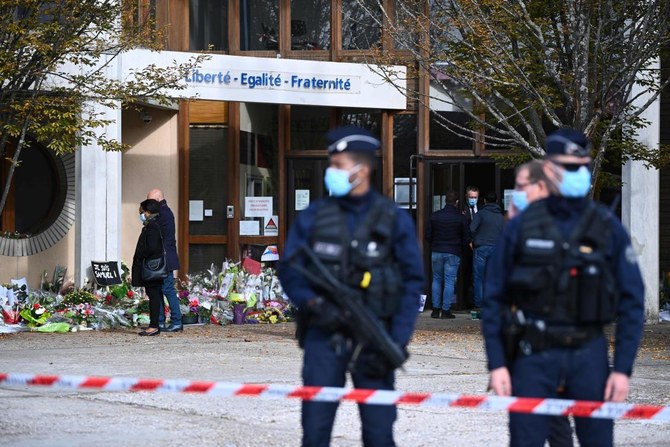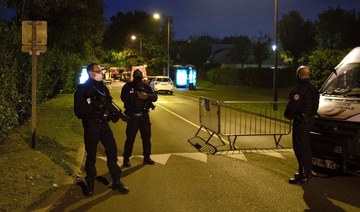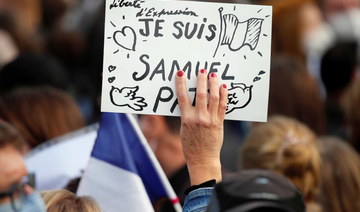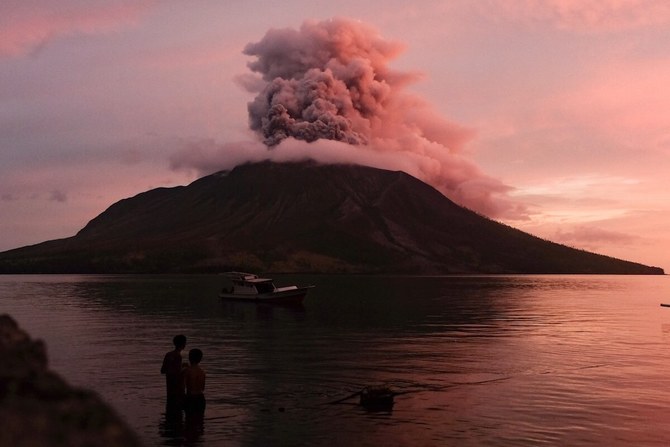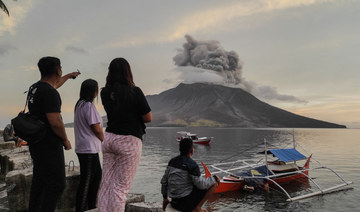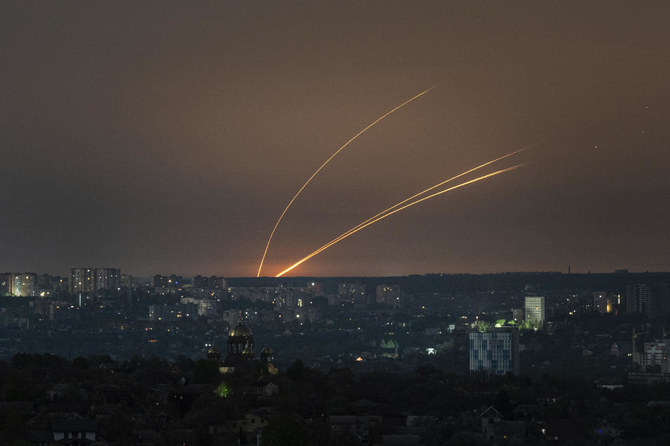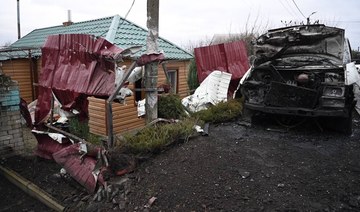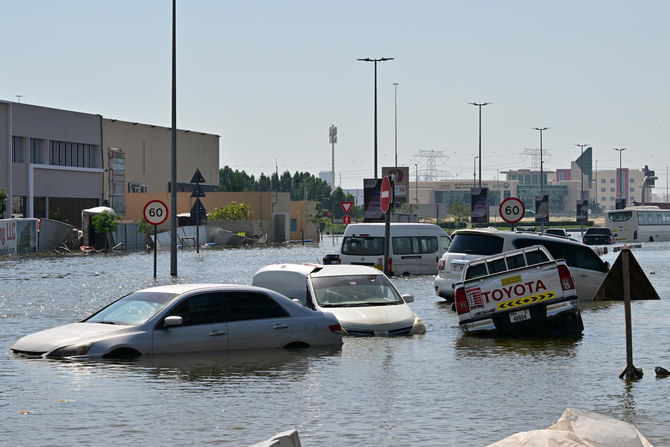PARIS: French police on Monday launched a series of raids targeting extremist networks three days after the beheading of a history teacher who had shown his pupils a cartoon of the Prophet Muhammad.
The operation came a day after tens of thousands of people took part in rallies countrywide to honor history teacher Samuel Paty and defend freedom of expression.
Minister of the Interior Gerald Darmanin said “dozens” of individuals were being probed for suspected radicalization.
While they were “not necessarily linked” to Paty’s killing, the government aimed to send a message that there would be “not a minute’s respite for enemies of the Republic,” he added.
Darmanin said the government would also tighten the noose on NGOs with suspected links to extremist networks.
“Fear is about to change sides,” President Emmanuel Macron told a meeting of key ministers Sunday to discuss a response to the attack.
“Extremists should not be allowed sleep soundly in our country,” he said.
Opinion
This section contains relevant reference points, placed in (Opinion field)
Paty, 47, was attacked on his way home from the junior high school where he taught in Conflans-Sainte-Honorine, 40 kilometers (25 miles) northwest of Paris.
A photo of the teacher and a message confessing to his murder was found on the mobile phone of his killer, an 18-year-old Chechen man Abdullakh Anzorov, who was shot dead by police.
The grisly killing has drawn parallels with the 2015 massacre at Charlie Hebdo satirical magazine, where 12 people, including cartoonists, were gunned down for publishing cartoons of the Prophet Muhammad.
Paty had shown his civics class one of the controversial cartoons.
According to his school, Paty had given Muslim children the option to leave the classroom before he showed the cartoon in a lesson on free speech, saying he did not want their feelings hurt.
The lesson sparked a furor nonetheless and Paty and his school received threats.
Eleven people are being held over his murder, including a known radical and the father of one of Paty’s pupils, who had launched an online campaign against the teacher.
Darmanin accused the two men of having issued a “fatwa” against Paty, using the term for an edict that was famously used to describe the 1989 death sentence handed down against writer Salman Rushdie by Iran’s Ayatollah Khomeini.
Anzorov’s family arrived in France from the predominantly Muslim Russian republic of Chechnya when he was six.
Locals in the Normandy town of Evreux where he lived described him as a loner who had become increasingly religious in recent years.
Police are trying to establish whether he acted alone.
Four members of his family are being held for questioning.
In scenes reminiscent of the aftermath of the Charlie Hebdo attack, when over a million people marched through Paris to defend press freedom, people again gathered at the central Place de la Republique on Sunday to express their horror over Paty’s death.
Some in the crowd chanted “I am Samuel,” echoing the 2015 “I am Charlie” rallying call for free speech.
French teachers have long complained of tensions around religion and identity spilling over into the classroom.
The government has vowed to step up security at schools when pupils return after half-term.
Far-right National Rally leader Marine Le Pen, who laid a wreath outside Paty’s school on Monday, called for “wartime legislation” to combat the terror threat.
Le Pen, who has announced she will make a third bid for the French presidency in 2022, called for an “immediate” moratorium on immigration and for all foreigners on terror watchlists to be deported.
Paty’s beheading was the second knife attack since a trial started last month over the Charlie Hebdo killings.
The magazine republished the cartoons in the run-up to the trial, and last month a young Pakistani man wounded two people with a meat cleaver outside the publication’s old office.




